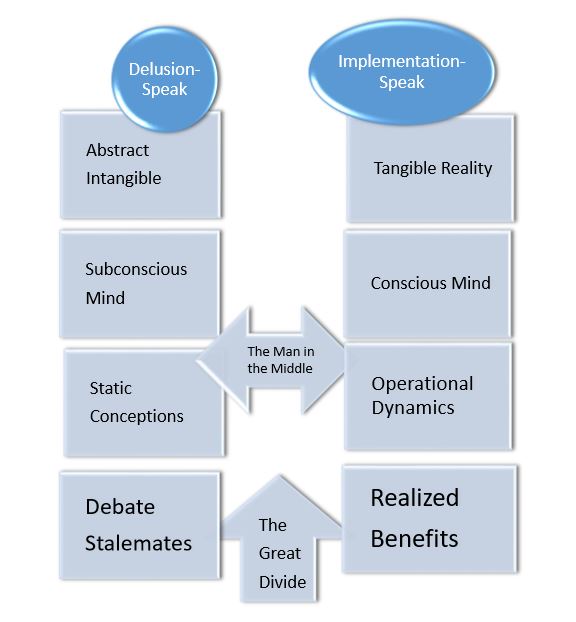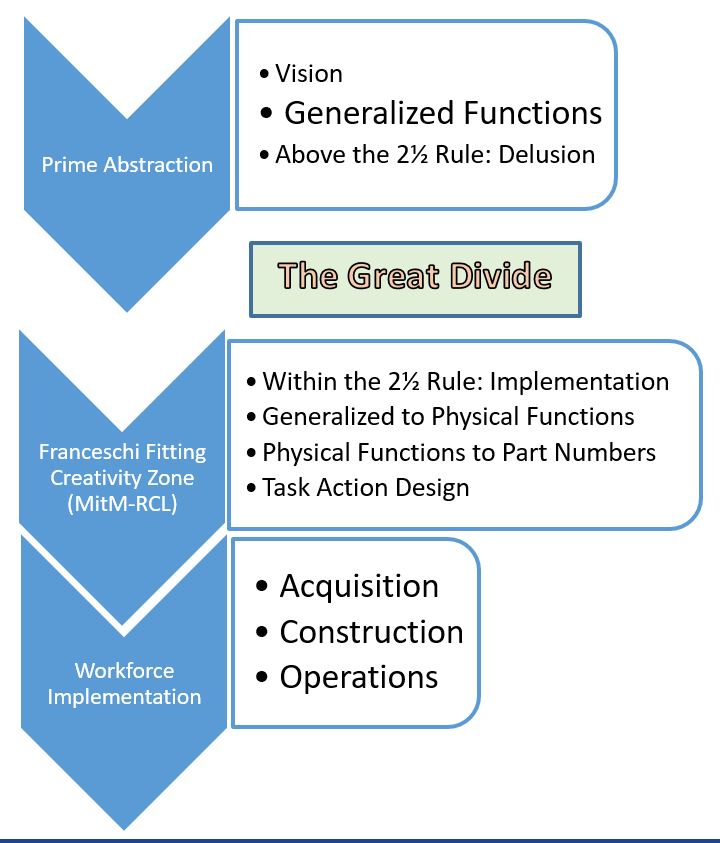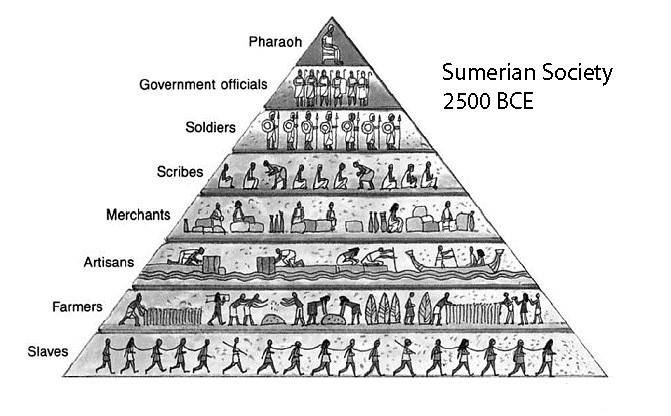Your value system
To understand the paramount influence of social status on social behavior is to navigate successfully among the rocks and mine-fields of social intelligence. It is an easy goal to reach. The forces of invariant human nature, our common Stone Age genome, interacting with natural law, conspire to segregate society into categories of social status – supported by all categories There are only two standards/measures and the differences in behavior between them are dramatic, impossible to misclassify.
- Social status by authority, privilege
- Social status by performance
Authority ranks
The ruling class of individuals migrate to populate the opinion realm of authority. This distinction is made by fear of punishment. A hierarchy operating by authority self-organizes around that theme. Plan A.
The allure of Plan A authoritarianism as a way of social life:
- Nothing to learn, nothing to know, instinctive
- Authority derives from opinion
- Generic, one size fits all, impersonal
- Trust is not a factor
- Fast acting, authority-building by instilling fear, is instant, exciting
- Do it yourself, no permissions
- The subconscious mind does all the work of decision-making.
In Plan Authoritarianism, individualism has to be destroyed at all costs so that social rank can function. In the upper hierarchy, individual variety is destroyed by groupthink and gladiatorial combat over authority. The upper class, always in defense mode, cannot tolerate challenges to their infallibility. To control the low classes, their arsenal is doctrine, dogma, and creed, directly and divinely connected to the operational reality, demanding conformance to their commands, enforced by punishments.
The Achilles’ Heel of authoritarianism is the existence of a Plan B success reference. It obliterates infallibility and omnipotence.
In order to compete in the arena of social status by authority, an opinion, it is necessary to create the widest distinctions possible between top and bottom. This can only be done by keeping the working class in dire straits and working up the ladder from there. The proof of this head-shed mindset is on display at the Business Round Table, the national association of head sheds of large business. Here you can witness the competition among the nation’s CEOs to move the most workforce jobs overseas. You can also witness every effort being made, along with the US Chamber of Commerce, to displace American workers with illegal aliens, as policy.
There is a history of management’s deliberate abuse of their workforce going back many centuries. Even though managing by fear is head-shed normal, it is well-proven and widely-known to be antithetical to prosperity. So, choosing drive management anyway eliminates greed as a factor in play.
Performance ranks
The antithesis to the cult of authoritarianism is the performance class. The functionaries of Plan B have one “end” that attaches to the concepts of Plan B and another end for connecting to the operational reality. All farmers are Plan B. The self-organizing principle of Plan B is performance to worker and social system betterment. Social power is awarded by performance, which involves:
- Having your act together
- Trustworthiness
- Personalization
- Prudent choices, evidence-based
- Competency at solving problems
- Explicit learning customized to circumstances
- Time to gather ground truth, build knowledge
- Social intelligence
- Cooperation and collaboration with others
- Deliberate maintenance of trust
The allure of performance as a way of social status is Maslow’s staircase to psychological success. Several instincts satisfied in Plan B are suppressed in Plan A authoritarianism, including the instincts of:
- Workmanship
- Fair play, square deal
- Efficiency
- Positive reciprocity
- Benevolence
- Security
- Responsibility for self
- Inalienable rights
- Trustworthiness
Notice that the implementation and performance cult of Plan B, is heavy on individualism and independence with responsibility taken. It is also the only link between the groupthink of the rulers with the bottom line revenue crew. It is fully competent to deal with disturbances.
The concepts of Plan B are validated by blazing success. The significance of Plan B is determined by direct before and after measurements – either direction. The importance of understanding social status in depth is to adjust your social behavior. Don’t ask authority to do what it can’t. You can trust the head shed only to act as groupthink delusionists. It is noteworthy that authority-seekers will remove themselves from Plan B implementations.
Social status knowledge makes it easy to size up a situation in that wherever you find one signature kernel of the set, you will find them all. These are system attributes that connect directly to trust/provisional/distrust relationships. None are independent of the others in its column. Likewise, nailing one kernel tells you what won’t be there in the system because it’s exclusively in the other.
For example, if you are dealing with authority-speak world, you know automatically that implementation-speak will be met with hostility. You don’t have to test the waters. You can develop a strategy that can succeed with the obstacles of the other “side” in place.
Understanding social status as reality, and familiar with your armamentarium, you can immediately use the knowledge to influence everyday social communications as you see fit. No faith is necessary. Running validation trials is hyperlearning at its best. Anyone visiting this website, getting this far, is foremost an implementer. To the MitM in operations, he cordons off his delusions as illusions until they prove-out in application. Once meeting the test of time, the illusions are restated and entered as trustworthy knowledge.

Continuously triage your immediate social situation as either authority-speak or implementation speak:
- If your transaction is authority-speak, both sides, as in a debate, you can never score lower than stalemate. Just be irrational. You are in control.
- If your transaction is implementation-speak, both sides, as in material productivity, just continue to be open-minded and rational. You are in control of progress through your performance and the instinct of reciprocity.
- If your transaction is across the Great Divide, one side authority and your side implementation, you can always prevent authority-speak from “winning” by playing its infallible card. Just keep one foot in the stirrup.
- Show support for the delusion as operationally valid and highly important. Then ask for implementations of the delusions so that you can audition them in situ. Then:
- Announce that, in Plan B, the matter never manifests in the first place. Invite skeptics to examine and evaluate active implementations of Plan B to see for themselves.
Of course authority-speak has no examples for your audit. Of course it will refuse your invitation to audition Plan B. Invoking the operational reality, to authority-speak, is treason.

It is essential to understand the great divide in all situations. At any slice of time an individual is either in authority fantasy mode or in implementation mode. By social conditioning, most people are caged in delusion, terrified of an exposure of their fantasy. When you have tested your social landscape and evaluated the behavioral distinctions of the two camps, you have acquired great power to protect yourself from harm.
When delusion is used to determine action, coverup of breakdowns becomes the way of life, as featured in all-delusion social media. Driven by a fear of the operational reality jeopardizing their social status, the delusion people avoid implementation at all costs. This powerful fear can be leveraged to implementer benefit in many ways.
One strategy invites the delusionist to implement his “vision,” in real life. Another strategy is to push for the delusionist to examine a living Plan B. He will, of course, refuse both offers. In one stroke, the incapacity to solve material problems is caught in the spotlight.
When the delusionists are called out on their fear of implementation or their panic over the existence of a Plan B, the irrationality of groupthink is publicly exposed. You then have several options to choose from, including the freedom to do what you think best.
The 2½ rule
Indifferent natural law
Background
In leveraging natural law to support attaining your purpose, you soon appreciate that natural law itself doesn’t care which way it cuts. Often, as an implementer, you’d like natural law to work its dependable magic in support of your goal-seeking – and wait for further instructions. Unfortunately, that’s not how perfect indifference works.
In implementation, you have to consider that the same natural laws that work for you will work against you with equal diligence. This fact of life works to distinguish the MitMs from all other audiences in ways that show up in reality. Implementation to the debating delusionists is as the cross to Dracula.
We “discovered” our audience at about the same time we were integrating Starkermann’s masterpiece on hierarchy dynamics. A few dozen tests were conducted around the country to validate the connection of natural law (control theory) to the distinguishing differences that were being encountered. The most prominent connection turned out to be the 2½ rule.

In application, the drama played out with the “in” audience is a diabolical opposite to the “out” audience experience. In any institutional setting, we can pre-qualify the audiences. Those on one side of the 2½ rule are assembled in their own meeting room apart and given a PB training lesson. After lunch, the same lesson is provided to the group on the other side of the 2½ rule in a separate meeting. When the night-and-day differences are exhibited, you find out later that the differences come as no surprise to either group. In other words, Starkermann’s calculated behaviors are congruent with what both audiences already know. Well, natural law is the law of experience.
A key attribute of this affair is that when we break the silence on the Starkermann concepts, we are not teaching the audiences something they don’t already know from experience. All we’re doing is legitimizing a safe, open discussion of the factors Starkermann connected to control theory, to natural law. The surprise was not just that the audience experience is consistent with the hierarchy table, but that the essential lessons of Starkermann’s table had already been assimilated one by one in private. The Plan A audience denies having the knowledge.
You don’t have to wait while the new information sinks in. The immediate reactions you get make it clear the learning phase has long since been completed. This Yin and Yang of audiences regarding implementation is ridiculously easy to demonstrate.

The inescapable conclusion is that role-playing is far more significant to behavior observed and decisions made than anything else. Just change the person’s spot in the hierarchy and watch the new characteristics emerge. You’ve been there. The “out” audience is as content in its role as the “in” audience. After all, the “out” audience recognizes itself immediately just like the “in” audience. They can sort themselves, error-free, in a heartbeat.
The quest for Plan B Everest was begun by professionals within 2½ levels of ground truth. In the early days, we assumed our peers at any level in the hierarchy would be eager to help the cause. This turned out to be the case. Back when the theme of discussion was “Ain’t it awful,” we enjoyed a wide following and considerable support. We assumed our audience was people like ourselves. It made sense. Everything we did was aimed at this large peer group.
As progress was being made in the journey, we noticed that the assumed Plan B audience was shrinking. The better the progress, the smaller the audience that wanted to hear about it. This test program was producing results contrary to our expectations. When the Plan B audience was found and validated, we realized we had never included them in our peer group promotions. The audience we had been interacting with all those years was not the Plan B audience we were validating. We had been attempting to violate Warfield’s dictum, namely, “Don’t ask them to do what they can’t.” Consider that this assumed audience was composed of highly-educated, very intelligent individuals and long-term friends.
When Plan B was reached in 2013, the original fan club evaporated. When we gave up on “Ain’t it awful” and made our conceptual case strictly on natural law derivatives, even the stalwarts with long cooperative relationships to our quest left the arena of discovery. The context in which we chose to advance the sociotechnology of Plan B turned out to be counterproductive to our purpose. When we switched our focus to the keystone audience, progress advanced by two orders of magnitude – advances met with cheers.

Putting social status to work
Because social status is the topmost determinant of your social transactions, it pays to identify and associate the banner hoisted by each participant before you act. Since there are only two types, authority and +power, doing so is not difficult.
If you are focused on goal-seeking performance:
- When you’re with those also centered on performance, cooperation and collaboration are on automatic
- When you’re the lone ranger, surrounded by the authority-centered, high on zero sum, the conditions of professional license require you to withdraw from the engagement.
- When the participants are a mixture, there is a proven tactic to establish the distinction, segregating the authorities from the workforce. The setting where the tactic, offense, has never failed is the project management review meeting. It’s a splendid occasion to build +power.
If you are focused on authority:
- When you’re with those also centered on authority, it’s zero-sum competition
- When you’re the only potentate, surrounded by the performing workforce, you can only make matters worse by acting.
- When you’re with a mixed audience, you have no choice but to engage zero sum mode to show domination strength to the other authorities.
The project review tactic for keystones
When the project management review meeting has turned into the redirection of responsibility phase, finger pointing among authorities, be silent. When it is less than half an hour before lunch break, stand up, interrupt and speak.
“Gentlemen, fixated on +performance above all, I sense an impasse in project goal-seeking has been reached. I propose the following action plan. While you gentlemen go to lunch, I and all those here who choose to join me, will develop a plan for going forward that will be doable and effective. We in the trenches are the ones responsible to deliver the results because we have the immediate control to deliver the results. All those wanting to help develop the plan, stay, all others enjoy a pleasant recess.”
Make sure you are not sitting between the authorities and the exit doors. There will be a stampede. In less than a minute you have your keystones bunched and tacit permission from the authorities. No one will return for 90 minutes. Of course, you get to work putting a practical plan together based on ground truth. Have the plan summarized on the whiteboard for those who do return. You will get the rubber stamp to proceed, without discussion. If some potentate should object, although it has yet to happen, tell him “meddle with this plan in any way and it’s 100% your responsibility to deliver.”
To learn more about social status as instinct visit its elaboration page.
Views: 144


